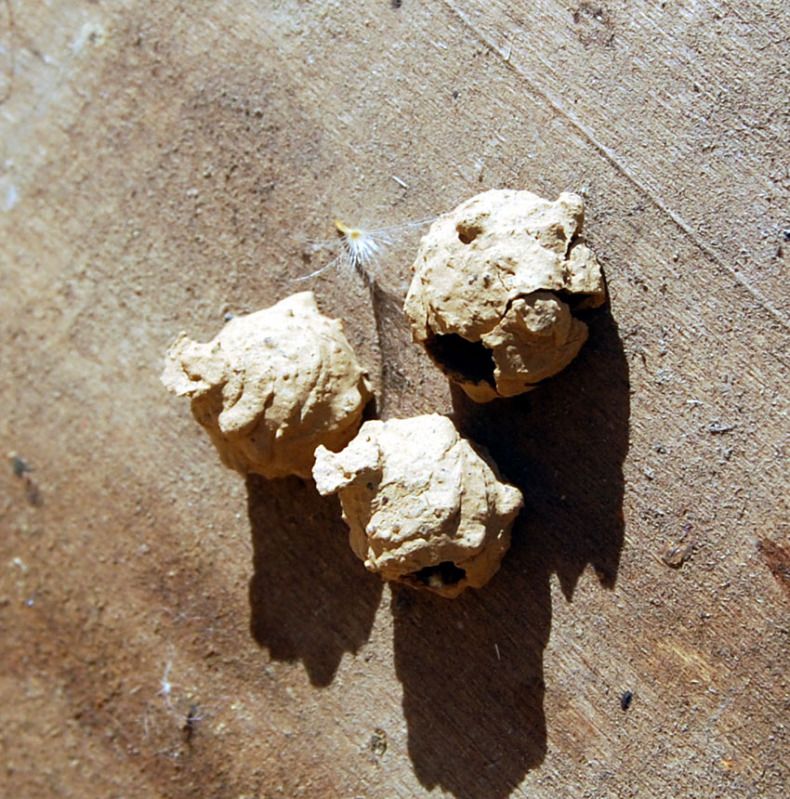Sorry to hear that you have been wiped out. It must be quite a shock

The things I know of are:
- reduce entrance down to 1 or 2 bee spaces
- use wasp traps e.g. wasp bane
- try to find the wasp nest and remove/destroy
- use a waspinator (imitation wasp nest) near hives
- don't spill nectar or sugar syrup, check for leaking feeders
Better luck next time, hope you find a way to keep bees and defeat the wasps
This is a difficult topic for me to help with because invariably I'm chastised for breaching the commercial rules of the forum if I offer any advice on the subject. However, it does pain me to listen to beeks lose their colonies so I'm going to risk being thrown off the forum if you collectively judge my intentions to be against the spirit of the forum.
Wasps display two characteristics when sweet feeding. The first is that they send out scouts to find food which they then report back to their nests. This results in swarm feeding behaviour where wasps from the same colony help each other to fend off wasps from other competing colonies. The second characteristic is that wasps are programmed to feed at the same food source until that food source has been fully consumed. Both of these traights have to be exploited in order to control wasps. This means catching and killing scouts before they ever get a chance to return to the nest after finding food or alternatively preventing them finding food in the first place.
Reducing the entrance to bee hives effectively prevents wasps finding food in the first place and therefore helps to suppress scouting behaviour insofar as the wasps don't return to their nests to report a food source.
Once wasps do enter a hive and confirm the location of any food and escape they will go back to their nests to report the location of the hive which results in swarming. (This always assumes that the bees themselves are not the food source - if that's the case then the problem is entirely different). Once swarming starts then drastic action is required. Above all, the feeding swarm must be destroyed otherwise it will simply be displaced to another hive. To do this requires moving the hive (and that can be a relatively short distance) and then putting down high efficiency wasp traps in the extact same location such that the entrance to the trap exactly matches the position of where the entrance to the hive was before the hive was moved. High efficiency traps are traps that don't allow any of the wasps caught to escape. Home made traps
are not from experience high efficiency traps and neither are dome traps, oak stump traps, beehive traps, glass traps etc. Use of such traps will just make the problem worse because they promote and exacerbate swarm feeding (the scouts enter, feed and then escape). If high efficiency traps are not used, the wasps will continue to return to the space that the hive was until they realise that the food source is no longer there. Thereafter they will seek out an alternative food source which may well be the same hive in its new position. So moving a hive on its own is not enough. The swarm has to be dealt with at the same time.
Eradicating wasp nests is unlikely to be successful simply because there can be as many as 1000 wasp nests per square mile and wasps can fly up to two miles to find food. If you happen to come across a nest then by all means have it destroyed but be wary that in treating a nest the vast majority of workers will not be killed if the nest is treated at the wrong time of day.
Artificial nests don't work. I could bore you with the details but ask any pestie and they will tell you that they remove multiple nests from the same attic spaces!
Preventing spills is always a good bet. If you do have a spill then make sure to wash it off thoroughly.
There is a caveat to this info. The first is that what we are talking about is vespine wasps (Vespula, Dolichovespula and Vespa) species and not polistes wasps (which do not I believe swarm as confirmed by Chris) and the second that the wasps are coming after the sweet food in the hive.
Best of luck for the next time.




